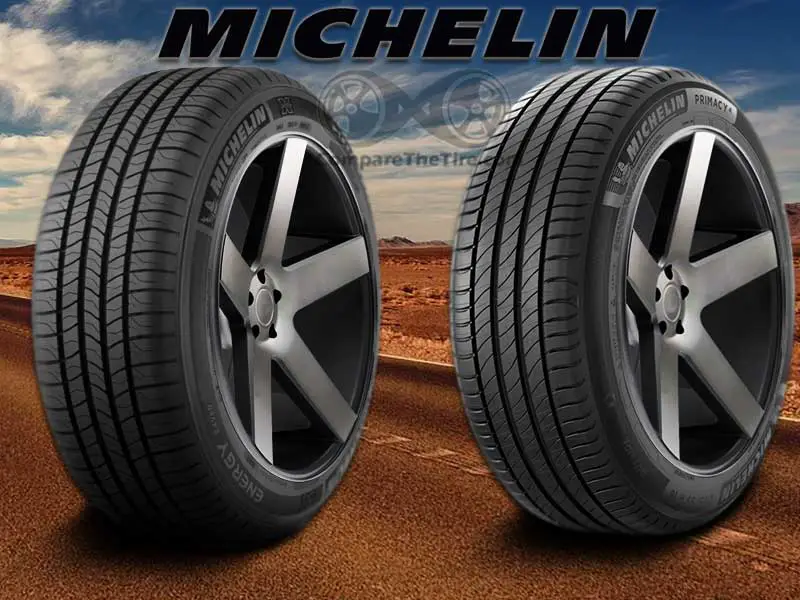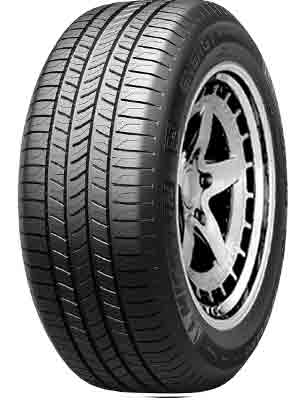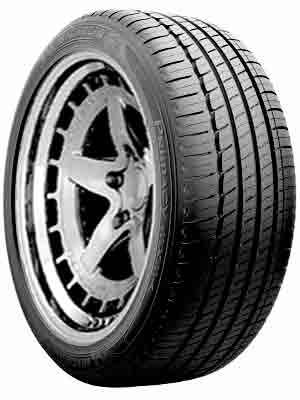Manufactured by Michelin, both of the contenders are designed for the summer environment with Saver being a touring tire while its competitor is a performance tire. Despite the condition of the road, Primacy more focuses on providing better grip while the competitor is superior in steering operations.
Formulated with 100% silica, Saver is an Eco-friendly tire that delivers optimal durability and maximum fuel efficiency due to having low rolling resistance. That’s the reason it provides a mileage warranty of 50,000 miles. Besides having marvelous steering ability, it is also a very comfortable tire that ensures a noise-free ride.

Designed through Michelin EverGrip Technology with a high-performance synthetic rubber compound, Primacy offers superior grip and braking performance. As being a performance tire, it provides optimal speed even while carrying a maximum load. Its phenomenal hydroplaning resistivity enhances its wet braking performance.
Compared to Primacy, Saver has superior handling, optimal durability, enhanced fuel efficiency, and offers a more comfortable & noise-free journey. But it lacks behind its competitor when it comes to road grip, resistance to hydroplaning, and advanced speed. Another major drawback of Saver is that it is only available in one size which is 175/65R15.
Table of Contents
Side By Side Comparison
Michelin Energy Saver AS

Michelin Primacy 4

| Specifications | Energy Saver | Primacy 4 |
| Tire Type | Touring Tire | Performance Tire |
| Tire Season | Summer Tire | Summer Tire |
| Tread Type | Asymmetrical | Symmetrical |
| Available Sizes, Inches | 15 | 15, 16, 17, 18, 19, 20 |
| Application | Touring Vehicles | High-Performance Passenger car |
| Standard Limited Warranty | 6 Years | 6 Years |
| UTQG Rating | 400 A A | 340 A A |
| Cost | 134.13 $ (175/65R15) | 96.68 $ (165/65R15) |
Tread Design
With an asymmetrical design, Saver consists of two ribs and three circumferential grooves with uneven groove width. Its external circumferential groove is slightly narrower than the other two. Its external rib and shoulder have low-density siping compared to its internal rib and shoulder. Its asymmetrical tread design serves the purpose of providing a dual advantage of traction in dry and wet conditions. Its external side is responsible for better dry grip due to high contact patch because of narrower circumferential groove and low-density siping. While its other half provides better hydroplaning due to wider circumferential grooves and high-density siping.
Primacy 4 has a symmetrical tread design with three central ribs and four circumferential grooves. All three of its ribs are evenly sliced by deep siping. While there are no sipes on its shoulders. Having three central ribs gives it a more contact patch compared to its competitor. And its void ratio is also comparatively more due to high-density siping and more circumferential grooves. But compared to its competitor, its shoulder blocks are smaller in size and also have a low void ratio due to smaller lateral grooves and no siping at all.
Road Grip
Having a comparatively less number of ribs makes the contact patch of Saver lesser than Primacy. So its grip on dry roads would be lower than its competitor. On wet roads, the situation would still be the same due to low a contact patch and comparatively low-density siping.
Whether it’s a dry road or wet, Primacy would have a better grip compared to its competitor. It is because of having a more number of ribs, which ensures high contact patch, and high-density sipes on these ribs which improve its hydroplaning resistivity.
| Parameter | Energy Saver | Primacy 4 |
| Dry Grip | Low | High |
| Wet Grip | Low | High |
Road Handling
Road handling is entirely up to the shoulder blocks of a tire. Since the shoulder blocks of Saver are comparatively larger, which means more contact patch, their grip on dry roads while steering would also be superior. On wet roads, it also takes the lead since its shoulder grooves are comparatively wider and one shoulder is siped with high density. Wider grooves and single-sided high-density siping would improve its hydroplaning resistivity while maneuvering the vehicle.
Primacy would have less contact patch due to comparatively smaller shoulder blocks. This would worsen its handling ability on dry roads. And even on wet roads, it would still be inferior to its competitor. It is because of having relatively smaller shoulder grooves and no siping at all, which would lessen the void ratio, and conversely, it would have poor hydroplaning resistivity.
| Parameter | Energy Saver | Primacy 4 |
| Dry Handling | High | Low |
| Wet Handling | High | Low |
Hydroplaning Resistivity
Having a thick layer of water between your vehicle’s tires and the road could lead to losing control of the vehicle and eventually to some serious accident. This scenario is commonly referred to as hydroplaning. To resist it, manufacturers engrave grooves and sipes in tread patterns so that water can be ejected away from the vehicle.
High-density siping and more circumferential grooves would lead Primacy to have a better resistance against hydroplaning since it has a high void ratio. But during steering operation, Saver would have superior hydroplaning resistivity because of its comparatively enlarged void ratio due to superior siping and larger lateral grooves.
Durability and Treadwear
Treadwear rating indicates the erosion rate of any tire. The higher the treadwear rating, the longer would the tire last. Tread depth is simply indicated as the thickness of tread in a tire. With a comparatively higher treadwear rating and tread depth, it is crystal clear that Saver would last longer than its competitor. Hence it would be a more durable tire.
| Contenders | Treadwear Rating | Tread Depth |
| Energy Saver (175/65R15) | 400 | 9.5/32” |
| Primacy 4 (165/65R15) | 340 | 9/32” |
Comfort & Noise
Since the ribs and shoulder blocks are thicker in the case of Saver, it would provide comparatively more comfort on bumpy roads. It’s because the thicker layer of ribs and shoulders would absorb the impact much better than its competitor.
Since the void ratio of Primacy is comparatively higher, then it would also be noisier. Because enlarge space between ribs would be able to encapsulate more amount of air particles which would produce noise at high-speed conditions.
Hence Saver would be a more comfortable and less noisy tire among the contenders.
Rolling Resistance and Fuel Efficiency
Besides rolling on the road, every tire consumes a small amount of energy, provided by the vehicle, to work against resistance between it and the road. It is known as the rolling resistance and the energy loss is regarded as the hysteresis. And they are directly related to one another and also the contact patch of a tire. Because Primacy has a comparatively higher contact patch, it would have more rolling resistance compared to its competitor. It all means that Primacy would consume more energy from vehicles to roll on roads.
Hence, in this case, Saver is the best option and a more fuel-efficient tire.
Load & Speed
If we look at the speed and load rating of our contenders then Saver takes the lead in both categories. But it only has this advantage over some of the size variations of Primacy. But there are many sizes of Primacy that have superior load and speed ratings, while Saver has only one size variation. The maximum speed and load endurance Primacy can offer is far superior to its competitor. It’s because Primacy is a performance tire that usually tends to have the superior speed to touring ones.
Hence in this category, Primacy wins the race.
Quick Summary
Energy Saver:
- is a touring tire designed for touring vehicles.
- has an asymmetrical tread design.
- offers superior road handling.
- provides better durability.
- provides a comfortable & noise-free journey.
- offer better fuel efficiency.
Primacy 4:
- is a performance tire designed for high-performance passenger cars.
- has a symmetrical tread design.
- provides better grip on dry and wet roads.
- offers superior hydroplaning resistivity.
- can endure maximum load while providing high speed.
- is less expensive than its competitor.


